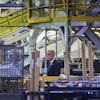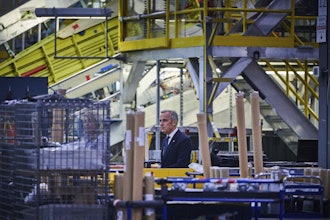The worldwide control valve market experienced double-digit growth in 2005 due to booming Greenfield plants in developing countries and significant increases in investment in oil & gas exploration and production, according to a new ARC Advisory Group study.
The global market for control valves is expected to grow at a compounded annual growth rate (CAGR) exceeding 5.5 percent over the next five years. The market was about $3.5 billion in 2005 and is expected to exceed $4.5 billion by 2010, as reported in the ARC's "Control Valve Worldwide Outlook.”
Because of strong project activity, after years of inactivity, most control valve suppliers are struggling to meet the demand, but "this expansion phase will not last forever, so control valve suppliers would do well to prepare themselves now for the inevitable market downturn,” said Senior Analyst David Clayton, the principal author of the ARC study.
Further hampering the control valve industry's ability to meet demand is the limited manufacturing capacity in the foundry industry. Foundries are an essential element in control valve manufacturing because they forge steel into finished valve bodies.
The decline in foundry operations between 2000 and 2005 can be contributed to several factors including high prices for raw steel and the shift towards software–based products.
As the the control valve market concentrated on developing software and digital positioner products, the decline in foundry capacity was not a considered problem. However, as the industry experiences a renewed emphasis on hardware sales, the lack of foundries is a problem for control valve suppliers.
For control valve suppliers to be successful in today's market, they must learn to integrate information technology with process plant operations, suggested the ARC report. As process manufacturers work to add intelligence in production assets to improve process control and visibility, many control valve providers are struggling to meet this need.
To address the problem of a lack of a single source automation solution, control valve suppliers and control system suppliers are working together to exchange asset and process knowledge for enriched asset management solutions. Using process data and device application knowledge to identify issues and problem areas, operators and maintenance personnel can analyze assets to provide potential solutions. The success of these initiatives will determine the market landscape for years to come, the study noted.
China and India’s growing economics are the main driving forces behind the growth in control valve, actuator, and positioner investments worldwide.
China’s is emerging as a major global manufacturing force, and as the fastest growing economy in the world, is expanding its industrial infrastructure to meet growing demand from increasing consumption. The market growth in China is being fueled by large chemical & petrochemical plants, grass-root oil & gas refineries, and new power plants, the report concluded.


















